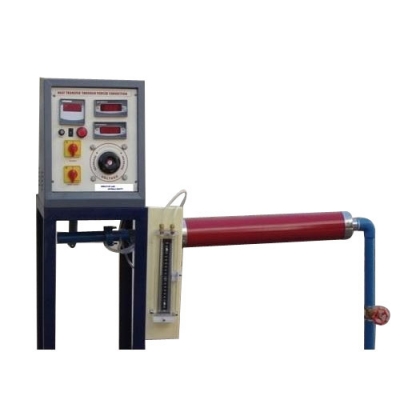- Civil Lab Mechanical Lab Engineering Lab Equipments
- sales@didacticlabequipments.com

CAT NO: DIDACTICNLE-Export-064018
Heat Transfer in Forced Convection.
Heat Transfer in Forced Convection
Our company offers best quality Heat Transfer in Forced Convection
at an affordable market price. The apparatus offered by us is utilized
for measuring average surface heat transfer coefficient or the Reynolds
number for a pipe losing heat under forced convection conditions.
Manufactured under strict supervision in accordance with industry set
norms and parameters, this apparatus is appreciated by the clients for
compact design, seamless finishing and longer functional life.
Description:
The apparatus consists of blower unit fitted with the test pipe.
Nichrome
wire heater surrounds the test section. Four Temperature Sensors are
embedded on the test section, two placed in the air stream at the
entrance and exit of the test section to measure the inlet and outlet
air temperature.
Test pipe is connected to the delivery side of the blower along with the orifice to measure flow of air through the pipe.
Constant
heat flux is given to pipe by an electric heater through a variac and
measured by Digital Voltmeter and Digital Ammeter.
Experimentation:
To determine average surface heat transfer coefficient for a pipe by forced convection.
Comparison of heat transfer coefficient for different airflow rates and heat flow rates.
To plot surface temperature distribution along the length of pipe.
Utilities required:
Electricity Supply: 1 Phase, 220 V AC, 10 Amp.
Floor area of 1.2 m x 0.5 m.
Technical Specifications:
Test section: Horizontal, externally heated
Diameter: 28 mm (approx.)
Length: 400 mm (approx.)
Blower: FHP of Standard make
Heater: Nichrome Wire
Digital Voltmeter: 0-300 Volt
Digital Ammeter: 0-2 Amp
Variac: 0-230 V, 2 Amp
Digital Tem.Indicator: 0-3000C, with multi-channel switch
Temperature Sensors: RTD PT-100 type
Instruction Manual: An english instruction manual will be provided along with the Apparatus
